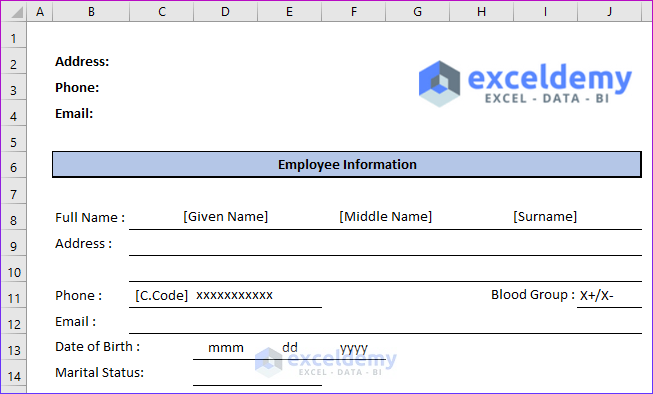Master the Art of Managing Excel Sheets: Easy Retrieval Tips

Excel is a powerful tool that has become indispensable in various professional fields, from finance and marketing to education and science. Among its myriad of functions, Excel's capability to manage and retrieve information efficiently stands out as particularly useful. This blog post dives deep into the art of mastering Excel sheets through some easy retrieval tips, offering insights that will transform your approach to handling spreadsheets.
Understanding Excel’s Grid System


Excel operates on a grid system where rows are numbered, and columns are lettered, creating a matrix that allows you to navigate through thousands of data entries with ease.
- Columns - Labeled A to Z, then AA to ZZ, and so on. For instance, column 100 would be labeled ‘CV’.
- Rows - Numbered starting from 1, going into the hundreds of thousands in newer versions.
- Cells - The intersection of a column and a row, denoted by the column letter followed by the row number, like A1 or CZ23.
Knowing how to quickly pinpoint the right cell or range is the first step toward mastering retrieval.
Navigating with Keyboard Shortcuts


Speed up your data retrieval by mastering these essential keyboard shortcuts:
| Shortcut | Function |
|---|---|
| Ctrl+G | Opens “Go To” dialog to jump to a specific cell or range. |
| Shift+Space | Selects the entire row of the active cell. |
| Ctrl+Space | Selects the entire column of the active cell. |

These shortcuts dramatically reduce the time spent searching for data and improve your overall productivity.
Effective Use of Filters


Excel’s filtering capabilities allow you to sift through vast amounts of data quickly:
- AutoFilter - Automatically filters out rows based on criteria in selected columns.
- Custom Filters - Allow for more complex filtering with options like “contains”, “does not contain”, or “is greater than”.
💡 Note: Keep in mind that filters work best when your data is organized in a table format, enabling easy sorting and filtering.
Using Conditional Formatting for Easy Data Identification


Conditional formatting highlights data according to rules you set:
- Highlight cells with values above or below a threshold.
- Apply color scales or icon sets to visually categorize data.
This technique is invaluable for spotting trends or anomalies at a glance, saving you time when you need to find specific data points.
Sorting and Grouping Data


Excel’s sorting functions are essential for organizing data:
- Sort by single or multiple columns, ascending or descending.
- Group rows or columns to summarize data hierarchically, enhancing readability and analysis.
Sorting and grouping transform chaotic datasets into orderly collections, making retrieval intuitive.
Data Validation for Consistent Entry


Set up data validation rules to ensure data consistency:
- Restrict input to specific formats or values.
- Create drop-down lists for consistency in data entry.
By preventing erroneous entries, you ensure that the data you are working with is reliable and easy to retrieve.
Hyperlinks for Quick Access


Creating hyperlinks in Excel can significantly expedite navigation within your worksheet or to external sources:
- Use hyperlinks to jump to different sheets, specific cells, or external documents.
- Link to online resources or other parts of your workbook for quick reference.
💡 Note: When using hyperlinks, ensure they are descriptive to provide context, making your Excel experience more user-friendly.
As you've journeyed through this guide on mastering the art of managing Excel sheets for easy retrieval, it's clear that Excel is not just a tool for data entry but a sophisticated system for efficient data management. From navigating its grid system to leveraging filters, conditional formatting, sorting, grouping, data validation, and hyperlinks, Excel offers a plethora of ways to make your work more productive. Remember, becoming an Excel wizard isn't about knowing every feature; it's about understanding how to use these features to your advantage. By implementing these retrieval tips, you'll be well on your way to transforming your spreadsheets into well-organized, data-rich resources that serve your needs effectively. Whether you're managing financial reports, research data, or any other type of information, mastering Excel's retrieval techniques will set you apart in your professional journey.
How can I quickly jump to a specific cell in Excel?

+
To jump to a specific cell, press Ctrl+G and enter the cell reference (e.g., B25) or a range (e.g., A1:B25). This ‘Go To’ function is also accessible via the ‘Find & Select’ menu.
Can I sort my data by more than one column?

+
Yes, Excel allows you to sort by multiple columns. When sorting, simply add levels by selecting additional columns, specifying the order (ascending or descending), and then Excel will sort based on those criteria one after another.
What’s the advantage of using Conditional Formatting in data retrieval?

+
Conditional Formatting helps visually highlight data that matches certain rules or criteria. It allows you to instantly see trends, exceptions, or anomalies, making data retrieval more efficient and intuitive.